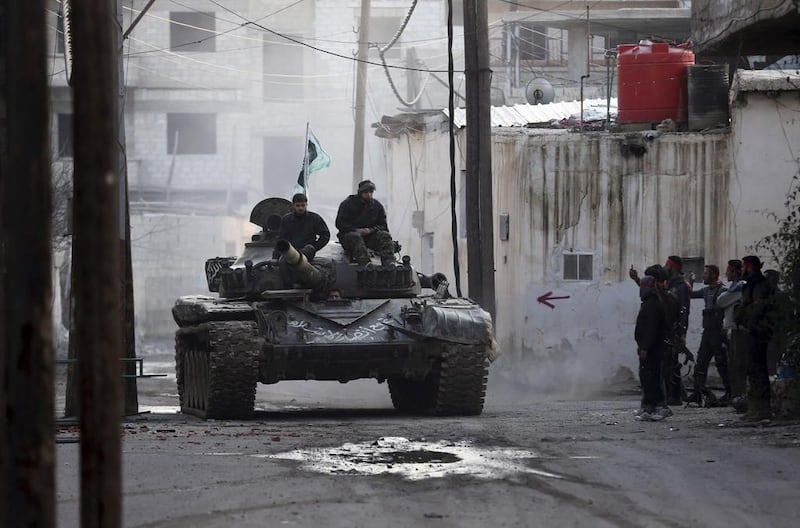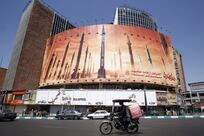As tensions escalate between Turkey and Kurdish militias in northern Syria, I'm reminded of a lengthy conversation I had with a Kurdish friend five years ago about the best direction for the eastern half of the country. We agreed that various demographics living in the region – stretching from Aleppo to the Iraqi border – historically governed themselves, and the best way forward would be a decentralised system.
Those areas are geographically separated from Damascus. A trip on a coach for several hours through an empty desert is a constant reminder that the region is a disjointed part of Syria. Even when this part is ruled centrally from Damascus, people in those areas continued to trade with each other as they did throughout history. Merchants from eastern Syria would sell their agricultural produce and livestock in Aleppo, and purchase manufactured goods, furniture and clothing from there.
The rule of the Baath party brought a combination of marginalisation, incompetence and limited development in those areas. The region making up Raqqa, Hasakah and Deir Ezzor is jointly referred to as "manatiq na'yiah", or the distant areas. In those areas, high-school graduates were given certain perks that only emphasised the inferiority of their education. For example, every student from those areas would be given three extra marks to match up the scores of their peers in other provinces.
Today, much of the debate about the secondary conflict in that region is shaped by whether one supports the YPG, the People’s Protection Units, a group that originated from the Kurdistan Workers’ Party, designated as a terrorist group by Turkey and the United States.
As someone from eastern Syria, I see the problem of unquestionable American support to the YPG, but I also see the unique value of its rise in that region. On balance, a way out of the current vicious circle is possible.
The YPG’s alliance with the US in the fight against ISIL made it possible to conceive of a decentralised system in eastern and northern Syria. It has also made it possible to imagine zones of stability in which the US prevents the regime and its allies from bombing them. The opposition would not have been able to do so, for reasons ranging from the US reluctance to do so with the rebels to the willingness of the regime and its allies to allow for such an arrangement with a force willing to cooperate with Damascus.
The growing American presence provides an opportunity not only for the YPG but also for the rebels and towns previously held by ISIL. This largely depends on whether the US is willing to go the extra mile of translating its presence into leverage to end the cycle of violence at least in that part of Syria. But it also depends on whether the rebels could take advantage of that presence.
Many in the opposition have also shown aversion to the concept of federalism in Syria, often confusing it for partition, while the Kurds have already put it into practice. As I wrote in this space more than a year ago, Syrians may come to appreciate a system currently practised in the north-east even if they oppose the group that imposed it.
The policy that Turkey has pursued in Syria over the past six years is problematic and often troubling, especially before the launching of Operation Euphrates Shield which successfully expelled ISIL from 5,000 square kilometres in northern Syria. Turkey’s previous policy enabled the dominance of extremist groups such as Al Qaeda’s Jabhat Al Nusra, which later changed its name to Jabhat Fateh Al Sham and more recently to Hayat Tahrir Al Sham, and Ahrar Al Sham.
I am not oblivious to the problems that could emerge in my region if Turkey had its way against the YPG and followed a similar policy in northeastern Syria. Strikingly, Turkey’s policy in northern Iraq in the wake of the US invasion in 2003 produced similar patterns, whereby its support to Turkmen militias who worked closely with Al Qaeda in Tal Afar strengthened extremists without providing any leverage for Ankara. If Turkey does not get its way in northern Syria, though, it will also continue to play a disruptive role that may perpetuate chaos and unrest in that region.
In the same breath, I see with clarity numerous problems with the unconditional support for the YPG’s project in the northern and eastern parts, which makes the current system imposed in the north-east nothing more than a vehicle for the YPG’s expansionist and unsustainable political agenda. As things stand, the unconditional support for the YPG and the lack of a long-term strategy for the US operation in eastern Syria are fundamental flaws in the current US approach in Syria. These flaws may reset the conditions for the revival of ISIL, the return of other jihadists to eastern Syria and the triggering of a secondary conflict that may prove in the future to be more intractable than the broader Syrian conflict.
All these issues are avoidable, and the US can turn that region into a success story instead, without having to undo the American alliance with the YPG. The trick is for the US to have an assertive leadership to balance the situation in that region. For the sake of Kurds and Arabs, and for the security of a Nato ally and the wider region, I can only hope that the US will seek a workable formula built on the assumption that it has to eventually exit the Syrian conflict and leave behind sustainable local structures and a neighbouring country that works to keep them afloat, not bring them down.
Hassan Hassan is a senior fellow at the Tahrir Institute for Middle East Policy and co-author of ISIS: Inside the Army of Terror
On Twitter: @hxhassan





